- europages
- >
- COMPANIES - SUPPLIERS - SERVICE PROVIDERS
- >
- industrial additives
Results for
Industrial additives - Import export
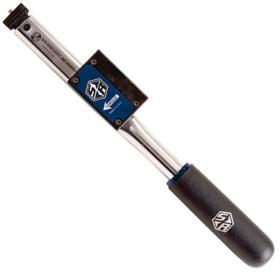
ZEMO VERTRIEBS GMBH
Germany
2.4 GHz Preset Clicker-Type Torque Wrenches Sturtevant Richmont 2.4 GHz Preset Clicker-Type Torque Wrenches incorporate the accuracy, repeatability and durability of our preset torque wrench lines that have made them a staple of assembly lines in many industries. The addition of the radio adds rapid operator and controller communication capability so they can be readily incorporated into your error-proofing approach. Uses the legendary SR LTC-Series Preset Interchangeable Head Torque Wrench as it's mechanical base, so you get the same incredible repeatability and durability we provide all our assembly customers. The tool's light weight and smooth vinyl grip provide excellent ergonomics and reduce the onset and level of operator fatigue. The SR Dovetail provides exceptional strength and rigidity, and accepts any of our over 140 Interchangeable Heads. Those tools featuring ratchets use the SR Slide Pin Ratchet, with it's legendary strength and maintenance simplicity.
Request for a quote
VESTA CHEMICALS BV
Netherlands
Quartzene® Z1 hydrophobic powder is the ultimate performance insulation material. It can be used as an additive in industrial, construction and coating products for improved thermal and acoustic insulation. Quartzene® Z1 can be tailor made to meet specific functions depending on the application and performance required.
Request for a quote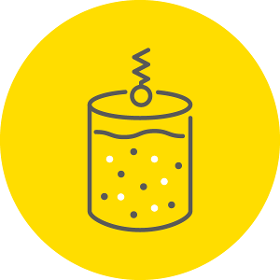
INTEGRATED CHEMICALS SPECIALTIES
Netherlands
Additives for dispersing fillers/pigments in solvents, coatings and plastics.
Request for a quote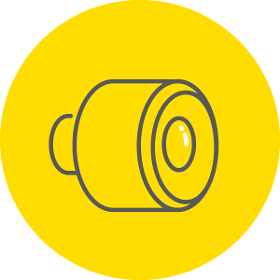
INTEGRATED CHEMICALS SPECIALTIES
Netherlands
ICS offers various systems for casting or spraying polyurethanes. Systems range from 1 to 4 component, and are avaidable for hot and cold cast. Depending on the properties your application needs we offer a system that suits your application best.
Request for a quote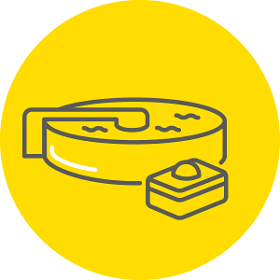
INTEGRATED CHEMICALS SPECIALTIES
Netherlands
The use of phosphonates has many different applications in various industrial applications. This is in addition to the classic water treatment application
Request for a quote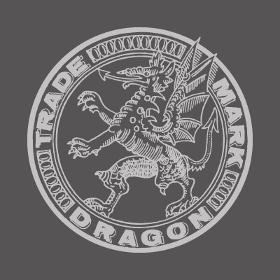
STOOPEN & MEEÛS
Belgium
Stoopen & Meeûs offers you our expertise in mixing pigments at your personal demand. And this already from 1000 kg. In order to enable us to find the most fitting solution for your demand, we have a range of more then 400 pigments in stock and different suppliers worldwide. For all custom-made solutions, and in order to find a solution with the highest quality, we maintain a close deliberation with our clients, which aims to obtain the required colour for your application . Even for non-coloured products, it is possible to find a solution. Furthermore, we offer you our pigments in adapted packaging, like small packages, low melt, watersoluble packaging…. Stoopen & Meeûs is already active in different sectors or domains, with adapted formulas : Concrete and chalk products Paints, polishing/furniture wax/varnish Plastics Fertilizers and protection of plants Asphalt Bricks Chemicals Resin …
Request for a quote
STOOPEN & MEEÛS
Belgium
Deco is a high quality Stuc, decorative & mineral, used on floors, walls and countertops (kitchen, bathroom). Deco stucco easily allows to create shades like a tadelakt. Appearance may vary from a rough, nuanced look to a smooth, glossy tadelakt look. "Tadelakt view in two layers and less than half the price!" Deco stucco can be applied to almost any solid surface in good condition, such as occupation, screed, concrete, tile, stucco ... Deco is particularly suitable for renovation of old bathrooms and tile floors. Deco should be finished with varnish or a soap on all floors, countertops and wet areas. Finish off with soap is sufficient for "normal" floors in living rooms, bedrooms ... Applying a varnish provides better protection against stains and moisture. Difference with Granito: -Deco has a slightly coarser grain and is therefore slightly thicker (1-2mm) -Deco has more and more nuances after polishing. -Deco feels soft after polishing.
Request for a quote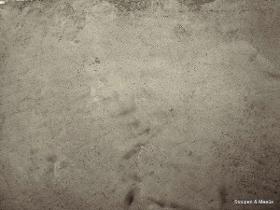
STOOPEN & MEEÛS
Belgium
Granito is a highly qualitive and mineral Stuc, mineral used on floors, walls and countertops (kitchen, bathroom). Granito Stuc allows easily to create a smooth look. Appearance may vary from a rough, nuanced to a smooth, sleek limelook. Granito Stuc can be applied to almost any solid surface in good condition, such as screed, concrete, tile, Stuc ... Granito is particularly suitable for renovation of old bathrooms and tile floors. Granito Stuc should be finished with varnish or a soap on all floors and countertops and wet areas. Finish off with soap is sufficient for "normal" floors in living rooms, bedrooms ... Applying a varnish provides better protection against stains and moisture. Difference with Deco Stuc: 1.put thinner . 2.fewer nuances 3.Granito always feels a little rougher. This plaster comes in packs of 16 kg of "basic" dry powder. The pigments are sold separately, so desired hue and intensity can be achieved by adding pigments.
Request for a quote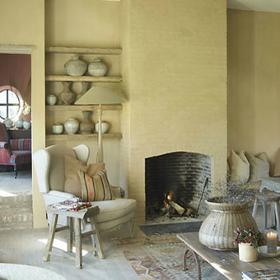
STOOPEN & MEEÛS
Belgium
Stoopen & Meeûs’ Primium Quality Limepaint is a mat chalk decorative paint for both in- and outdoors. There are many possibilities for indoor decorative painting- and spatula-techniques for the Limepaint, which is also very suitable for restorations. This paint has a mat chalk - and mineral look and is extremely suitable for all manner of decorative painting techniques and renovations of old buildings. The Limepaint is sold in powder form, together with a wide range of pigments. The pigment is added to the mixing water and mixed with the powder-paint afterwards. If a little less water is added, various spatula-techniques are possible.
Request for a quote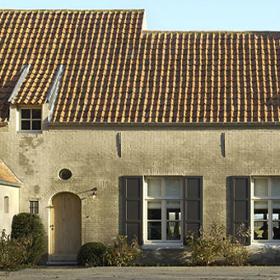
STOOPEN & MEEÛS
Belgium
Badgeoning is an age-old technique for an authentic façade finish, where mineral paint is applied sufficiently thickly with a blocked brush. The Stoopen & Meeûs Primium Quality Badgeon is weather-resistant and shows the structure of the brickwork and when the weather is wet, it shows the surface forming which it is famous for. The brushing technique helps determine the look and the absorbency of the substrate determines the colour nuance in the badgeon coat. The thickness of the application, 1-3 mm, is determined by the amount of mixing water that is used, the brush and the number of coats. It is recommended you apply two coats at a time, where the first coat is applied diluted to counterbalance the strong absorption of the substrate (the diluted coat is always a little lighter in colour). If both coats are coloured, no white undercoat will be revealed in case of damage. The Primium Quality Badgeon+ is a compound of mineral raw materials (maximum grain size 0.
Request for a quote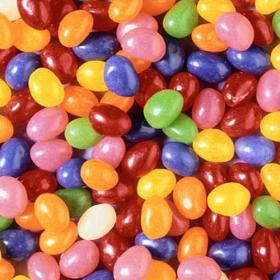
STOOPEN & MEEÛS
Belgium
candy, spices, herbs, ... FOODCOLOURS A dye is a substance that needs a certain affinity with the carrier on which it is being applied. Hence a bond is created and the colouring capacity emerges. Contrary to a pigment, a dye is a dissolvable colorant and the colouring capacity will only show when dissolved. Dyes always have an organic compound. For more than 5000 years, natural resources have been the base for dyes. Leafs, roots and berries are just some of the components. Nowadays, most of these components have been replaced by synthetic variants. Of course, special dyes are applied when considering nutrition. (E100-199) Some dyes can be transformed in pigments by applying iron salt in a solution. This will cause the formation of the pigment. However, pigments won in this way are often little UV-resistant. What are dyes? There exists a great number of dyes for a great number of applications. Dyes are usually categorised based on their properties. (e.g.
Request for a quote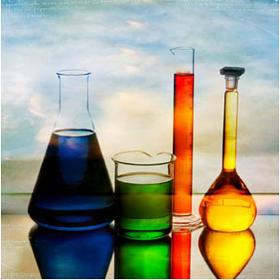
STOOPEN & MEEÛS
Belgium
detergents, ... WATER-SOLUBLE DYES A dye is a substance that needs a certain affinity with the carrier on which it is being applied. Hence a bond is created and the colouring capacity emerges. Contrary to a pigment, a dye is a dissolvable colorant and the colouring capacity will only show when dissolved. Dyes always have an organic compound. For more than 5000 years, natural resources have been the base for dyes. Leafs, roots and berries are just some of the components. Nowadays, most of these components have been replaced by synthetic variants. Of course, special dyes are applied when considering nutrition. (E100-199) Some dyes can be transformed in pigments by applying iron salt in a solution. This will cause the formation of the pigment. However, pigments won in this way are often little UV-resistant. What are dyes? There exists a great number of dyes for a great number of applications. Dyes are usually categorised based on their properties. (e.g.
Request for a quote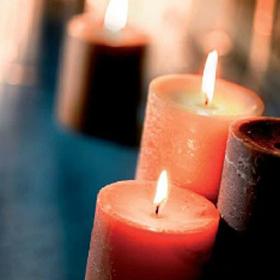
STOOPEN & MEEÛS
Belgium
petroleumbased products, candles, ... SOLVENT DYES A dye is a substance that needs a certain affinity with the carrier on which it is being applied. Hence a bond is created and the colouring capacity emerges. Contrary to a pigment, a dye is a dissolvable colorant and the colouring capacity will only show when dissolved. Dyes always have an organic compound. For more than 5000 years, natural resources have been the base for dyes. Leafs, roots and berries are just some of the components. Nowadays, most of these components have been replaced by synthetic variants. Of course, special dyes are applied when considering nutrition. (E100-199) Some dyes can be transformed in pigments by applying iron salt in a solution. This will cause the formation of the pigment. However, pigments won in this way are often little UV-resistant. What are dyes? There exists a great number of dyes for a great number of applications. Dyes are usually categorised based on their properties. (e.g.
Request for a quote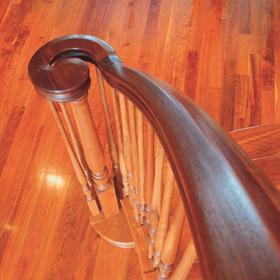
STOOPEN & MEEÛS
Belgium
staining, polishing, varnishing,... NATURAL OXIDES: yellow, red, brown, black STAIN, COLOURED STAIN SYNTHETIC IRON OXIDES: yellow, red, brown, black CHROME OXIDE GREEN COBALT OXIDE: green, blue ULTRAMARINE: blue, violet CARBON- or PITCH-BLACK TITANIUMDIOXIDE WHITE LEAD CHROMATE : yellow, orange WATER-SOLUBLE DYES: acid and basic A dye is a substance that needs a certain affinity with the carrier on which it is being applied. Hence a bond is created and the colouring capacity emerges. Contrary to a pigment, a dye is a dissolvable colorant and the colouring capacity will only show when dissolved. Dyes always have an organic compound. For more than 5000 years, natural resources have been the base for dyes. Leafs, roots and berries are just some of the components. Nowadays, most of these components have been replaced by synthetic variants. Of course, special dyes are applied when considering nutrition.
Request for a quote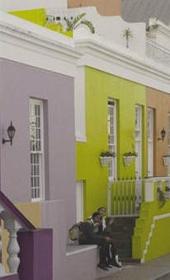
STOOPEN & MEEÛS
Belgium
Oil paint, watercontaining paint, mineral paint, synthetic paint, ... ZINC WHITE NATURAL OXIDES: yellow, red, brown, black SYNTHETIC IJZEROXIDES: yellow, red, brown, black DRAGON PIGMENTS: red, yellow, blue, green, grey CHROME LEAD/ LEAD CHROMATE: yellow, orange MOLYBDATE ORANGE CADMIUM SULPHIDE: yellow, orange, red CHROME OXIDE GREEN CHROMATE GREEN COBALTOXIDE: green, blue ULTRAMARINE: blue, violet MILORI OR PRUSSIAN BLUE CARBON- or PITCH-BLACK IVORY OR BONE BLACK CHROMATE GREEN YELLOW: PY 1, PY 3, ... RED: PR 2, PR 3, ... GREEN: PG 7, PG 8, ... BLUE: PB 15, TITANIUM DIOXIDE WHITE A pigment is a substance that has the capacity of colouring a certain carrier (cement, plaster, synthetic fibres, paint, …). Contrary to dyes, pigments are insoluble. Therefore, pigments remain under the form of small particles and will just be dispersed in the carrier and so colouring the carrier.
Request for a quote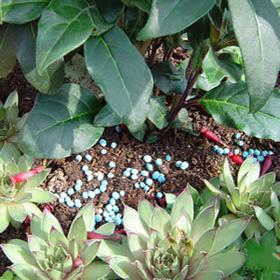
STOOPEN & MEEÛS
Belgium
Liquid and powdered fertilizers, sowing seed NATURAL OXIDES: yellow, red, brown, black BISTER SYNTHETIC IRON OXIDES: yellow, red, brown, black DRAGON PIGMENTS: red, yellow, blue, green, grey A pigment is a substance that has the capacity of colouring a certain carrier (cement, plaster, synthetic fibres, paint, …). Contrary to dyes, pigments are insoluble. Therefore, pigments remain under the form of small particles and will just be dispersed in the carrier and so colouring the carrier. The colouring capacity of the pigment depends on the fineness of the particles composing the pigment. In general we can say that the finer the particles are, the higher the colouring capacity of the pigment will be. A pigment is only suitable for certain applications. The pigment shouldn’t react with the carrier. Moreover, the pigment shouldn’t oxidize under influence of oxygen in the air and shouldn’t lose its colour under influence of sunlight (UV).
Request for a quote
STOOPEN & MEEÛS
Belgium
Plastic, epoxy, polyester, alkyd, quartz floors, roofing, ... NATURAL OXIDES: yellow, red, brown, black SYNTHETIC IJZEROXIDES: yellow, red, brown, black DRAGON PIGMENTS: red, yellow, blue, green, grey CHROME OXIDE GREEN COBALT OXIDE: green, blue CARBON- or PITCH-BLACK MILORI OR PRUSSIAN BLUE CHROME GREEN YELLOW: PY 1, PY 3, ... RED: PR 2, PR 3, ... GREEN: PG 7, PG 8, ... BLUE: PB 15, ... ULTRAMARINE: blue, violet TITANIUM DIOXIDE WHITE A pigment is a substance that has the capacity of colouring a certain carrier (cement, plaster, synthetic fibres, paint, …). Contrary to dyes, pigments are insoluble. Therefore, pigments remain under the form of small particles and will just be dispersed in the carrier and so colouring the carrier. The colouring capacity of the pigment depends on the fineness of the particles composing the pigment. In general we can say that the finer the particles are, the higher the colouring capacity of the pigment will be.
Request for a quoteDo you sell or make similar products?
Sign up to europages and have your products listed
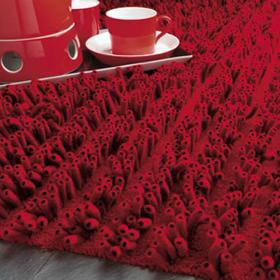
STOOPEN & MEEÛS
Belgium
wool, coton, leather, raffia, nylon, ... DIVERS DYES A dye is a substance that needs a certain affinity with the carrier on which it is being applied. Hence a bond is created and the colouring capacity emerges. Contrary to a pigment, a dye is a dissolvable colorant and the colouring capacity will only show when dissolved. Dyes always have an organic compound. For more than 5000 years, natural resources have been the base for dyes. Leafs, roots and berries are just some of the components. Nowadays, most of these components have been replaced by synthetic variants. Of course, special dyes are applied when considering nutrition. (E100-199) Some dyes can be transformed in pigments by applying iron salt in a solution. This will cause the formation of the pigment. However, pigments won in this way are often little UV-resistant. What are dyes? There exists a great number of dyes for a great number of applications. Dyes are usually categorised based on their properties. (e.g.
Request for a quote
STOOPEN & MEEÛS
Belgium
Stoopen & Meeûs has two types of Stuc in the range: Stuc Granito & Stuc Deco. Both are highly decorative & mineral products for floors and walls. "Lime look with the strength of concrete" "Tadelakt look in two layers and less than half the price!" Stuc can be applied on any solid, dry surface such as concrete, screed, but also on existing tiles. Walls, tables and countertops, etc. ... can also be finished with Stuc. The fact that you can apply Stuc directly on tiles, makes that much time, material and cost can be saved! Granito & Deco Stuc is applied in layers of less than 1 mm. Smooth surfaces can already complete in 2 layers (total thickness of + - 1.5 mm). To finish existing tiles 3 to 4 very thin layers will suffice. (Total thickness 1,5-2 mm) Using Stuc Granito and Deco: All Stuc layers are placed with a stainless spatula. 1. degreasing of Surface and application of StucPrimer by means of a roller or brush. 2.
Request for a quote
STOOPEN & MEEÛS
Belgium
In consultation with some external advisors, Stoopen & Meeûs have put together a colour palette for the Badgeon and Lime wash. These people, all of whom have worked in the world of paint for years, are trendsetters in their field and this has resulted in an extensive colour range To make these pigments mainly inorganic pigments have been used. For organic-based pigments too, only the highest quality pigments have been used which will keep their beautiful colours over many years. For safety reasons some colours are ‘exclusively suited for indoor use’ in Badgeon or Lime wash. It concerns the Whitewash pigments: red: Lucca, Minos blue: Lagoon, Magma These pigments come in 400 gram jars. For Badgeon, 1 jar per 25 kilo bag or 16 kilo bucket will usually suffice. For Lime wash, it may be necessary to add 1, 2, or 3 jars per 8 kilo bucket of Lime wash to acquire a deep, intense colour. All pigments can be intermixed into a wide range of mixed colours.
Request for a quote
SOLOVIAN
Turkey
Black Masterbatch with the most competitive prices: • 50% Carbon Black, 50% PE • Carbon Black : 50% (Recycled, First class quality) • Performance : Almost same with a black masterbatch manufactured from virgin carbon black and resins •Carrier Resin : LLDPE 50% • Application : Suitable for Films, Garbage bags, Pipes etc. • Grade : Percentages of Carbon Black and PE can be customized upon customer’s demand. • Capacity to export: 250T/month • Turkish market : Our customers in Turkish market are film, garbage bag and pipe manufacturers. They have used this masterbatch for a long time and they are very satisfied with high quality and very competitive prices. • High Blackness • High Dispersion • High Brightness • High Carbon Black Content For more information http://www.solovian.com/wp-content/uploads/2017/04/Solobatch-Catalogue.pdf

SOLOVIAN
Turkey
We manufacture and trade high-quality comprehensive range of phthalocyanine pigments, which are extensively used for various industrial applications. Phthalocyanine pigments are applied to NC lacquer, printing ink; water based inks, solvent inks, offset inks, PVC, paints, plastic, rubber and textile. Phthalocyanine Pigments Applications Pigment Blue 15:0 Universal Pigment Blue 15:1 Universal Pigment Blue 15:2 Universal Pigment Blue 15:3 Paints | Water-based Inks | N. C. Inks | Solvent Inks | Offset Inks | Plastics | Textiles | PVCs | Rubber Pigment Blue 15:4 Solvent Inks | Offset Inks | Paints Pigment Blue 15:6 All Type Of Inks Pigment Green 7 Universal Pigment Green 7 Paints
Results for
Industrial additives - Import exportNumber of results
23 ProductsCountries
Company type